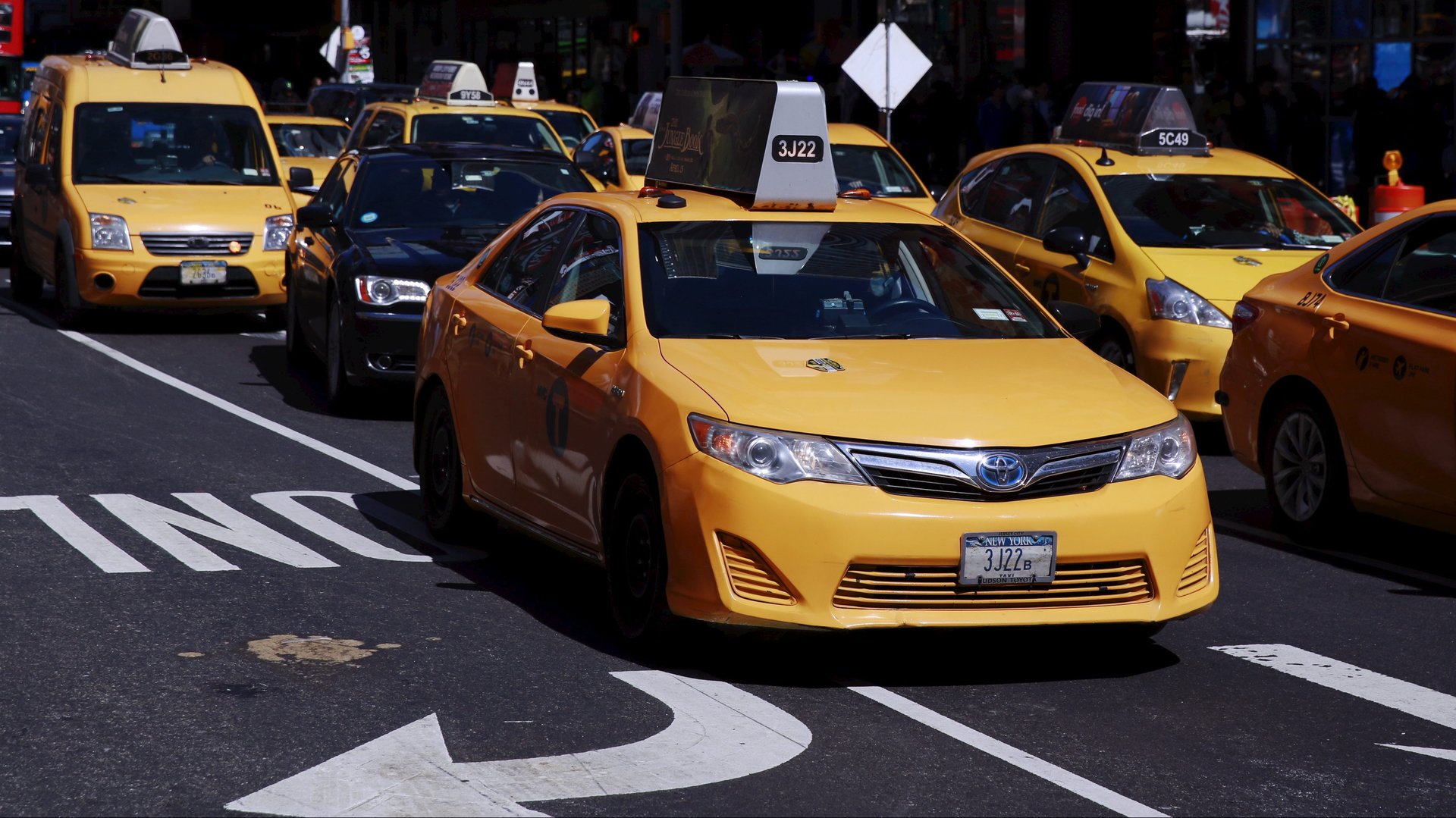No one is innocent in New York City’s taxi market
After years of being blamed for the woes of taxi drivers in New York City, Uber is no longer the leading villain. Over the weekend, the New York Times published a scathing investigation of the city’s taxi medallion system and the bankers, dealers, lenders, and city officials who propped it up, helping to take millions of dollars off the hands of unsuspecting drivers at the peak of a bubble.


After years of being blamed for the woes of taxi drivers in New York City, Uber is no longer the leading villain. Over the weekend, the New York Times published a scathing investigation of the city’s taxi medallion system and the bankers, dealers, lenders, and city officials who propped it up, helping to take millions of dollars off the hands of unsuspecting drivers at the peak of a bubble.
For those who aren’t familiar, the taxi medallion is a special plate affixed to the hoods of cabs that are legally permitted to pick up passengers on New York City streets. (You can see them on the hoods of yellow cabs in the photo at the top of this article.) Local politicians developed the medallion system in 1937 in an effort to tamp down on fly-by-night cabbies who had overwhelmed the market, snarling traffic and depressing fares. The city originally sold 16,900 medallions but later reduced that number to 11,787, where it stayed until the late 1990s.
In the beginning, a taxi medallion sold for about $10. It increased over time, as you’d expect of any valuable asset with limited supply, not to mention regular inflation, but prices were relatively stable until the mid-2000s. Then something changed. The city began selling new medallions. It placed ads and held seminars promoting a medallion as a “once-in-a-lifetime opportunity.” From 2002 to 2014, the price of a medallion skyrocketed, from $200,000 to more than $1 million.
It was a bubble, plain and simple, and in late 2014 it burst. The Times reports are filled with devastating interviews with drivers whose finances and lives were crushed by loans for these million-dollar medallions. Just as in the run-up to the 2008 housing crash, taxi medallion lenders in recent years loosened standards. They eliminated down payments, piled on fees for borrowers, signed deals that lasted decades, and even devised interest-only loans that could last indefinitely.
Perhaps more striking was this pair of facts from the Times report: From 2002 to 2014, as medallion prices soared, driver incomes barely changed. And since 2011, when Uber entered New York City, yellow cab revenue has decreased by about 10% per cab—not insignificant for a driver, but hardly comparable to the crash in medallion values.
Since the Times published its series, politicians who sat idly by through the boom and bust have rushed to launch probes, plan hearings, and draft legislation. New York City mayor Bill de Blasio, the least popular Democratic primary candidate for US president, has ordered three different agencies to investigate the city’s taxi industry. The Independent Drivers Guild and New York Taxi Workers Alliance, different groups that represent local driver interests, have renewed their calls for professional drivers to be exempt from a congestion tax on hired rides that took effect in February.
Uber, meanwhile, is surely breathing a sigh of relief. The Times investigation has firmly shifted the blame for the collapse of the taxi industry and the suffering of professional drivers in the city, including eight who died by suicide in just over a year. The focus of the political rhetoric has moved on from Uber and the broader, app-based ride-hail industry to these predatory lenders.
As is often true, the reality is more complicated. More than 80,000 drivers now drive for the four largest non-taxi ride providers in the city—Uber, Lyft, Gett/Juno, and Via—compared to the 13,587 licensed medallion cabs. There were 206,540 licensed drivers in 2018 (pdf), nearly double the number when Uber arrived in New York City in 2011 (pdf). The local taxi regulator says that when you account for fare increases and various taxes and surcharges that don’t get passed on to drivers, the average medallion driver earned $219 per day as of March, compared to $263 per day as of March 2014, right before Uber really took off.
Medallion lenders also aren’t the only ones to have made misleading promises and pushed predatory loans. Uber famously ran an ad campaign in 2014 claiming its median driver in New York City earned more than $90,000 a year. Asked to produce a single one making that much money, the company was unable to. Uber paid $20 million to the Federal Trade Commission in January 2017 for misleading drivers over their potential earnings.
Uber also for years ran a car-leasing program in New York in partnership with four local auto dealers that funneled drivers into predatory subprime leasing contracts. These contracts enabled dealers to deduct weekly lease payments, which could be as high as $500 a week, directly from a driver’s Uber earnings—and enabled dealers to remotely lock drivers out of their cars if they missed too many payments. Uber shut down that program in November 2017 following a Quartz investigation.
Local officials have recently become attuned to the plight of professional drivers. In December 2018, the city council passed a first-of-its-kind pay floor for ride-hail drivers that aims to lift their earnings to $17.22 an hour, or an independent contractor’s equivalent of the city’s $15-an-hour minimum for regular employees. Those rules took effect in January and are expected to boost earnings for the typical driver by 45%, or nearly $10,000.
The point is that the taxi industry is, and has always been, a mess. The irony shouldn’t be lost that the medallion was originally created to fix one problem, and over time created a new one. The medallion owners, the bankers, the lenders, the lawyers, the city, Uber, Lyft—no one is innocent in New York City’s taxi industry. Except, maybe, the drivers.